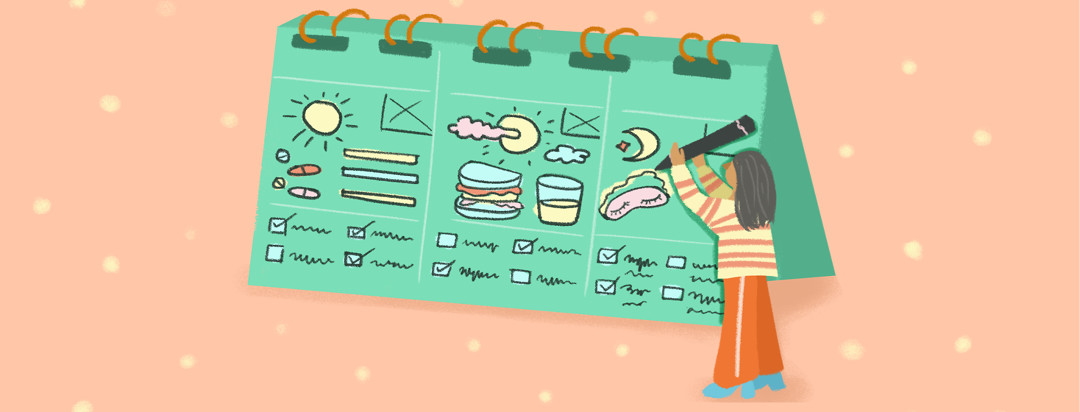Routines Give You a Key Advantage in Diabetes Management
Routines. At first glance, they can look like just one more thing to get through in an already busy day managing life with type 2 diabetes.
What is a routine?
A predetermined action to take when triggered. You don’t even have to think about it; you just do it. And that’s the point. Planned out in advance and triggered by a particular set of circumstances, routines can help lighten the mental load of living with a chronic condition and support consistent self-care.
Benefits of routines for type 2 diabetes management
You don’t have to think about it. You just do what’s, well, routine.
Routines provide some predictability
For example, put leftovers from dinner into single-serving containers and tomorrow’s lunch is ready to go. You’ve killed two birds with one simple action.
Routines provide some structure to the day
For example, a 6:30 a.m. wake-up followed by breakfast at 7:30 a.m. is one way to start a routine daily schedule.
Once established, routines make it so that there’s nothing to think about first, no choice to make and, most importantly, no decision fatigue.
Routines can actually help you stay healthy by making it easier to do things, like checking your blood sugar levels, taking medications on schedule, and exercising more, consistently.
Routines don’t have to be limited to physical actions
Mental and spiritual routines can be just as important. A daily routine that includes meditation or prayer can bring on a calm, grounded feeling. Some people have established routines to help them counter negative self-talk. One example is interrupting negative thoughts by saying “Cancel, cancel, cancel!” to themselves or visualizing a big, red stop sign.
Consciously encouraging calm feelings and interrupting negative thoughts help reduce feelings of anxiety and worry that can come with the relentless demands of diabetes.
Pick the routines that work for your diabetes management
There is no one set of routines that work for everyone.
The most useful routines support your individual goals and fit in your regular day.
Want to check your blood glucose levels at a particular time of day? Look for an already-established habit or activity to use as a trigger. For example, checking blood glucose levels after brushing your teeth—this routine can work at both the beginning and the end of the day.
Want to exercise more? Look for opportunities to move more. Take the stairs instead of the elevator. Stand up when talking on the phone. Set an alarm to go off every couple of hours, then get up and stretch when it goes off.
Decide how best to do the task
The same routine task can be done in more than one way.
For instance, a lot of people sort their medications into a pill organizer. That way each day’s pills are in one container and there’s no need to carry a lot of pill bottles with you or go through the bottles several times a day. Some people do this sort daily. Others do it once a week. I even know someone who fills up their pill organizers once a month!
You decide what works best for you.
Your needs will change and so will your routines
Over time our needs change and our routines will need to change as well.
For instance, a change in medications might mean checking blood sugar levels more often or at different times of the day. Or a job change can mean less time to exercise after work.
The point of routines is not to have every task set in stone. The point of setting up routines is to have some tasks happen like clockwork with minimal effort so that they're easier.
With routines, you know that tasks (that are important to you) are getting done regularly. Check-in from time to time to make sure your routines are still working for you. If not, then it’s time to change them up.
I’m curious. What helpful routines have you established for managing life with type 2 diabetes? Let me know with a comment.

Join the conversation